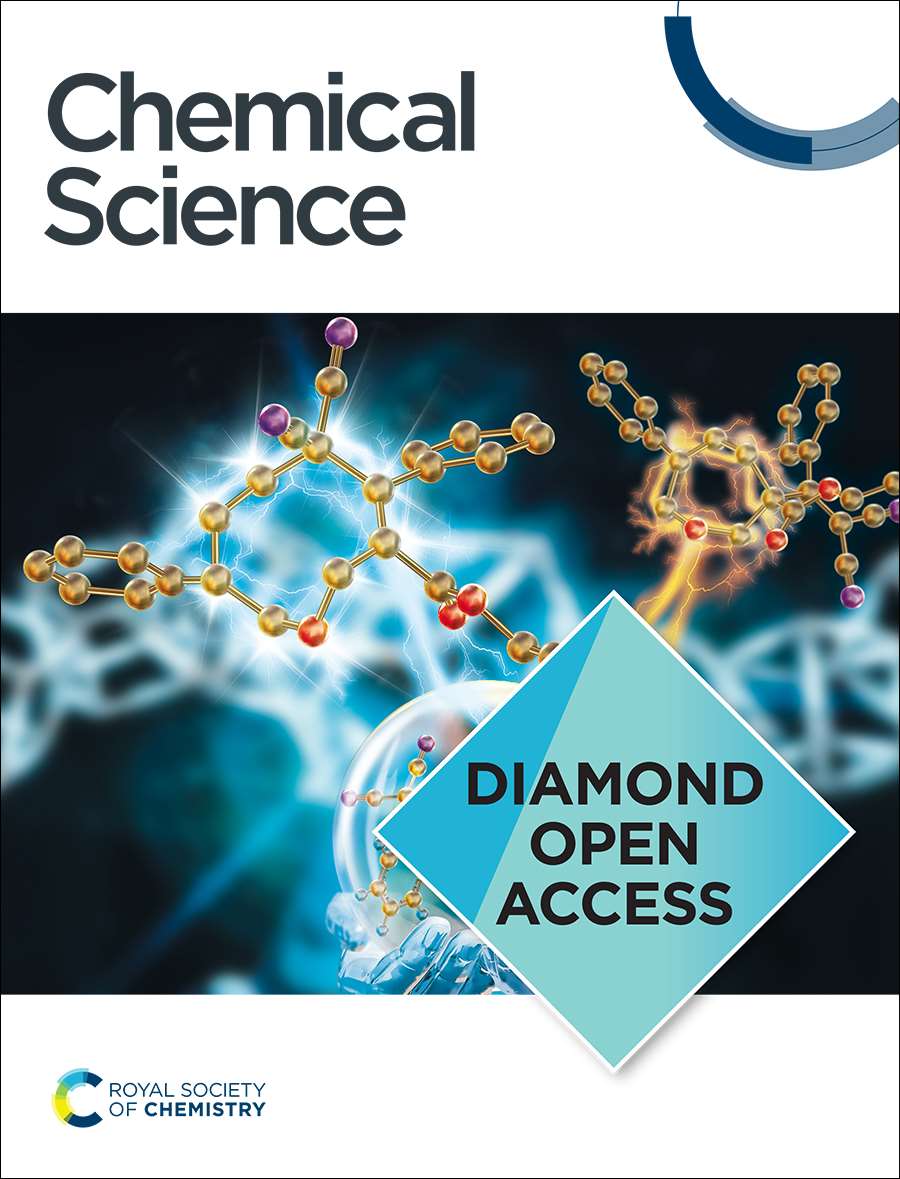甲基硫代多环芳烃π共轭核的扩展:1,4,7,10-四甲基硫代和四甲基冠烯的合成与表征
IF 7.4
1区 化学
Q1 CHEMISTRY, MULTIDISCIPLINARY
引用次数: 0
摘要
通过区域选择性甲基硫代化控制多环芳烃(PAHs)的晶体结构是实现具有超高迁移率的高性能分子半导体的有效策略,例如甲基硫代芘和苝。根据该策略,我们设计并合成了1,4,7,10-四甲基(甲基硫)冠烯(MT-coronene)和1,4,7,10-四甲基氧基冠烯(MO-coronene)作为高性能分子半导体的潜在候选材料。由于冠烯核心是高度对称的,在1,4,7,10位的区域选择性功能化似乎是具有挑战性的,因此,我们测试了两种构建这种区域选择性功能化冠烯衍生物的策略;一种是通过铱催化的硼化反应将母体冠烯直接功能化,另一种是用功能化的萘衍生物逐步构建冠烯核。有趣的是,前者适合于mt -冠烯的合成,而后者适合于mo -冠烯的合成。MT-和mo -冕烯的晶体结构与其母体γ-结构有显著差异,分别属于砖状结构和夹心人字形结构。根据具有各向同性但小分子间HOMO重叠的砖状晶体结构,基于mt -冕的单晶场效应晶体管(sc - fet)表现出良好的晶体管响应,载流子迁移率高达0.5 cm2 V-1s-1。另一方面,MO-coronene的sc - fet由于夹芯人字结构,固态电子结构为零维,远不如MT-coronene的sc - fet。基于MT-和mo -冕烯的晶体结构和理论计算,分析了固态中分子间相互作用和分子间HOMO重叠的趋势,从而解释了冕烯体系作为分子半导体的性能。此外,我们还比较了一系列甲基硫代多环芳烃、芘、苝、苝和冠烯的固态结构,得出了它们作为分子半导体的性能差异,从而对固态分子结构、填料结构和电子结构之间的关系有了新的认识,为开发高性能分子半导体提供了观点。本文章由计算机程序翻译,如有差异,请以英文原文为准。
Extension of the π-conjugated core of methylchalcogenolated polycyclic aromatic hydrocarbon: synthesis and characterization of 1,4,7,10-tetrakis(methylthio)- and tetramethoxy-coronene
Controlling the crystal structures of polycyclic aromatic hydrocarbons (PAHs) by regioselective methyl chalcogenolation is an effective strategy for realizing superior molecular semiconductors showing ultrahigh mobility, as exemplified by methylthiolated pyrene and peropyrene. Following the strategy, we designed and synthesized 1,4,7,10-tetrakis(methylthio)coronene (MT-coronene) and 1,4,7,10-tetramethoxycoronene (MO-coronene) as potential candidates for high-performance molecular semiconductors. Since the coronene core is highly symmetric, the regioselective functionalization at the 1,4,7,10-positions seemed to be challenging, and thus, we tested two strategies for constructing such regio-selectively functionalized coronene derivatives; one was the direct functionalization of parent coronene via the iridium-catalyzed borylation reaction, and the other was the stepwise construction of the coronene core with functionalized naphthalene derivatives. Interestingly, the former was suitable for the synthesis of MT-coronene, whereas the latter was suitable for MO-coronene. The crystal structures of MT- and MO-coronene were significantly different from the γ-structure of their parent and classified into the brickwork and the sandwich herringbone structure, respectively. In accordance with the brickwork crystal structures with isotropic but small intermolecular HOMO overlaps, the MT-coronene-based single-crystal field-effect transistors (SC-FETs) showed decent transistor responses with the carrier mobility of up to 0.5 cm2 V–1s–1. On the other hand, the SC-FETs of MO-coronene, the solid-state electronic structure of which was zero-dimensional due to the sandwich herringbone structure, were far inferior to those of MT-coronene. Based on the crystal structures and theoretical calculations on MT- and MO-coronene, we analyzed the tendency of the intermolecular interactions and intermolecular HOMO overlaps in the solid state, which explains the performances of the coronene system as molecular semiconductors. Furthermore, we compared the solid-state structures of a series of methylthiolated PAHs, pyrene, perylene, peropyrene, and coronene, to figure out the differences in the performances as molecular semiconductors, which gave us new insights into the relationship between the molecular, packing, and electronic structure in the solid state, showing viewpoints for superior molecular semiconductors.
求助全文
通过发布文献求助,成功后即可免费获取论文全文。
去求助
来源期刊

Chemical Science
CHEMISTRY, MULTIDISCIPLINARY-
CiteScore
14.40
自引率
4.80%
发文量
1352
审稿时长
2.1 months
期刊介绍:
Chemical Science is a journal that encompasses various disciplines within the chemical sciences. Its scope includes publishing ground-breaking research with significant implications for its respective field, as well as appealing to a wider audience in related areas. To be considered for publication, articles must showcase innovative and original advances in their field of study and be presented in a manner that is understandable to scientists from diverse backgrounds. However, the journal generally does not publish highly specialized research.
 求助内容:
求助内容: 应助结果提醒方式:
应助结果提醒方式:


